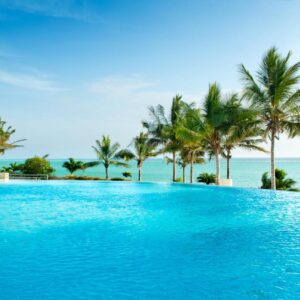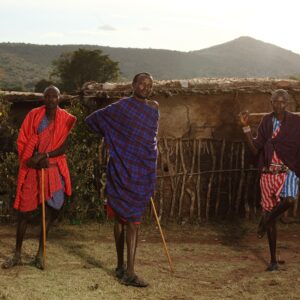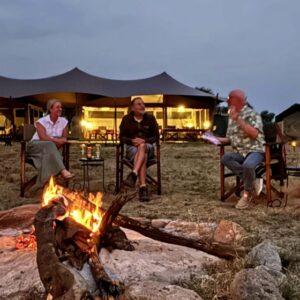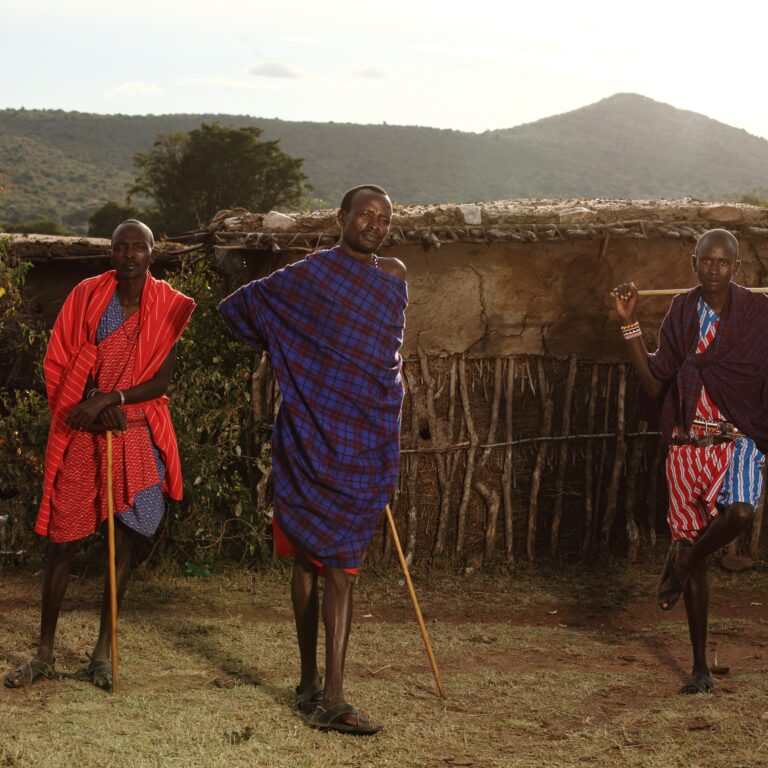Climbing Mount Kilimanjaro, the tallest peak in Africa, is a journey that beckons adventurers from all over the world. Standing at 5,895 meters (19,341 feet), this magnificent dormant volcano draws trekkers not just for its breathtaking views and unique ecosystems but also for the challenge it presents. As any seasoned climber would tell you. Preparation is key, from choosing the right route to ensuring you have the appropriate gear. One item that frequently comes up in discussions about climbing gear is gaiters. So, do you need gaiters to conquer Kilimanjaro? While gaiters aren’t strictly required for climbing Kilimanjaro, they highly recommended, especially for summit night, as they offer extra protection from scree (gravel) and extreme cold.
Here’s a more detailed look at why gaiters a good idea. Protection from Scree. The path to the summit, particularly on the summit night, can be covered in loose scree. Which can get into your boots and cause discomfort or blisters. Gaiters help keep your socks and boots dry and free of debris. Protection from Cold. Temperatures can drop significantly at higher altitudes, and gaiters can help insulate your legs and ankles, keeping you warmer. Especially during the cold summit night. Let’s delve into what gaiters are, their benefits, and whether they are essential for your trek.
What Are Gaiters?
Gaiters are protective garments worn over the shaft of your hiking boots and lower pants. They designed to prevent debris, mud, water, and snow from entering your boots. Typically made from durable, water-resistant materials, gaiters secured with straps under the boot and around the calf. They come in various sizes, shapes, and designs, tailored for different types of adventures.
The Terrain of Kilimanjaro
To frame the conversation around gaiters, it’s important to understand the terrain you’ll encounter on Kilimanjaro. The mountain features diverse ecosystems, ranging from tropical rainforest at the base to alpine desert and glacial landscapes at higher altitudes. This variety means that trekkers can face muddy paths, rocky ground, and even snow-covered sections.
Common Conditions Encountered on the Trek
✔Rain and Mud. Particularly during the rainy seasons from March to May and November to December. Trails can become extremely muddy. The rainforest sections, in particular, tend to collect standing water, which can lead to sloppy conditions.
✔Sand and Dust. The lower slopes and some of the drier routes may be filled with loose volcanic rock and sand, which can easily enter boots and become uncomfortable during the long days of hiking.
✔Snow and Ice. As climbers ascend towards the summit on trails like the Marangu or Lemosho routes. They may encounter snow and ice, especially near the glaciers. This presents additional challenges that require suitable footwear and gear.
Benefits of Using Gaiters
Given the mountainous and variable conditions on Kilimanjaro, gaiters offer several advantages that can enhance your trekking experience:
✔Protection From Debris. Gaiters keep rocks, dirt, and vegetation out of your boots. Preventing discomfort and potential blisters. This can greatly improve your overall trekking experience.
✔Water Resistance. In muddy or wet conditions, gaiters can provide an extra layer of protection against water entering your boots, keeping your feet drier for longer.
✔Increased Warmth. Gaiters can also act as a barrier against cold winds and can help retain heat near your ankles during colder sections of the climb.
✔Improved Ankle Support. Some gaiters provide additional support around the ankle, which can be beneficial on uneven terrain.
When to Wear Gaiters on Kilimanjaro
While gaiters aren’t an absolute necessity for every trekker, several factors can help you decide if they are suitable for your climb:
✔Timing of Your Climb. If you plan to trek during the rainy season when muddy trails prevalent. Gaiters can significantly enhance your comfort and protect your feet.
✔Your Comfort Level. If you typically dislike getting mud or debris in your boots and prefer to maintain a high level of comfort, gaiters are a worthwhile investment.
✔Route Selection. Certain routes, such as the Machame or Lemosho, often present muddy sections. While the Marangu route may be drier. Consider how the route you choose might impact your decision about gaiters.
Alternatives to Gaiters when climbing Mount Kilimanjaro
If gaiters don’t quite fit your style or you prefer to travel light, there are alternatives to consider:
✔Waterproof Socks. While they won’t entirely keep debris out, waterproof socks can protect you from wet conditions to some extent.
✔Ankle-High Waterproof Boots. Investing in high-quality waterproof hiking boots can help keep your feet dry without the added weight of gaiters.
✔Bungee Cords or Straps. Instead of gaiters, some trekkers opt to use bungee cords or straps securely fastened at the lower pant leg to minimize the entry of debris.
Top 10 Best Brands of Gaiters Recommended for Climbing Mount Kilimanjaro
When preparing for a challenging trek like Mount Kilimanjaro, having the right gear is essential. Especially when it comes to keeping your feet and lower legs protected. Gaiters can shield you from mud, water, rocks, and other debris, making your climb more comfortable. Here’s a list of the top 10 brands of gaiters that are highly recommended for this adventure:
Outdoor Research. Renowned for their quality and durability, Outdoor Research gaiters are designed to withstand tough conditions while providing excellent waterproofing.
Black Diamond. These gaiters known for their robust protection favored by many climbers for their functional design and comfort.
Mountain Hardwear. Offering a great balance between weight and durability, Mountain Hardwear gaiters are perfect for those looking to stay protected without added bulk.
REI Co-op. With a strong reputation for outdoor gear. REI Co-op’s gaiters provide great versatility, making them suitable for various terrains faced on Kilimanjaro.
Marmot. Marmot gaiters are crafted for extreme weather conditions. Ensuring that you stay dry and comfortable as you tackle the mountain’s trails.
Simms. While primarily designed for fishing. Simms gaiters waterproof and offer excellent leg protection, making them a good option for trekking.
Salomon. Salomon gaiters lightweight and breathable. Perfect for those who prioritize comfort without sacrificing protection.
Arc’teryx: Known for their high-quality materials, Arc’teryx gaiters resist abrasion and offer exceptional durability for adventurous climbers.
Columbia: Columbia’s gaiters combine affordability with functional design. Making them a smart choice for budget-conscious trekkers.
Mammut: Mammut gaiters are designed for alpine conditions and provide serious protection. Built strong to take on the rugged terrain of Kilimanjaro.
Choosing the right gaiters for your Mount Kilimanjaro climb involves considering factors like weather, terrain, and personal comfort. Each of these brands offers reliable products to help you tackle the mountain with confidence. Happy climbing!
6 tips for happy feet on Kilimanjaro
Choose the Right Footwear: Invest in sturdy, well-fitted hiking boots that provide ankle support and comfort.
Break Them In: Wear your boots on shorter hikes to avoid blisters.
Keep Your Feet Dry: Moisture-wicking socks are essential to prevent dampness, so change them frequently.
Stay Hydrated: Drink plenty of water to reduce swelling.
Regular Breaks: Pause often to relieve pressure and stretch your feet.
Foot Care Essentials: Pack blister pads and ointments for immediate relief when needed.
Final Thought!
While gaiters may not be listed as essential gear for every Kilimanjaro trekker. They can certainly enhance your climbing experience by providing protection and comfort under adverse conditions. Being at the intersection of convenience and practicality. They offer advantages that many climbers find worthwhile, especially in frequently changing weather and challenging terrain. In the end, the decision to wear gaiters comes down to personal preference, the conditions you anticipate encountering, and the specific route you choose.
As you draw closer to your Kilimanjaro expedition. Consider your environment, planned itinerary, and personal comfort. Whether you choose to don gaiters or not. Being well-prepared with the right gear ensures a memorable journey up the stately slopes of Africa’s highest peak. Climb on and enjoy every step of the adven








